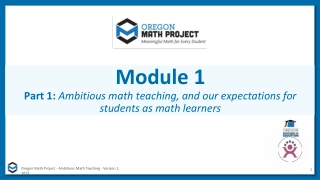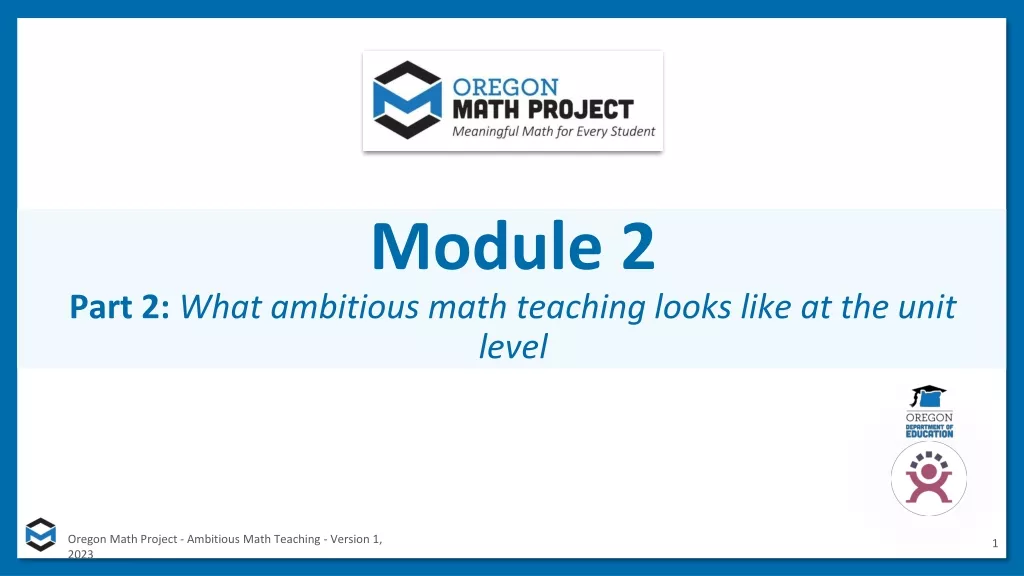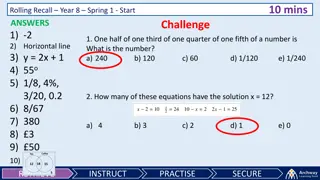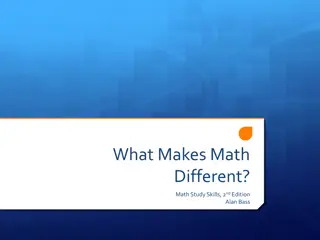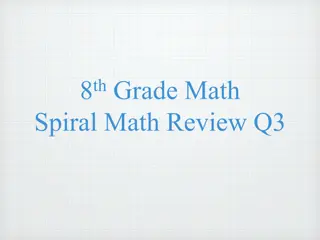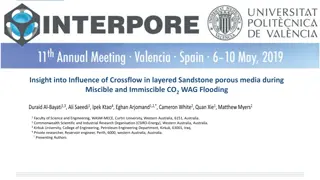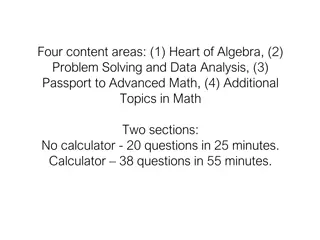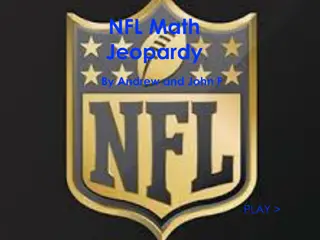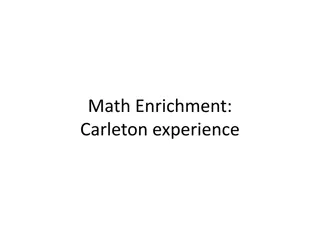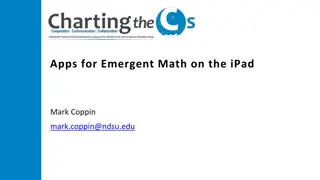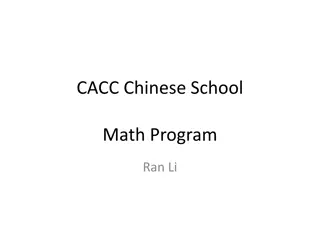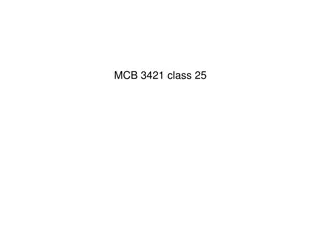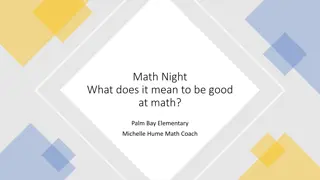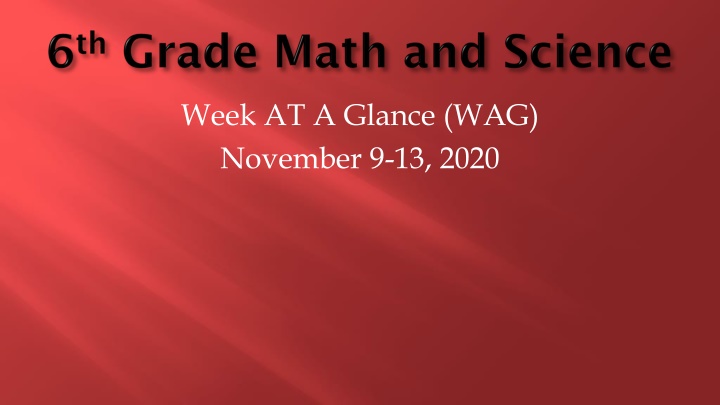
Learning Targets and Agenda for November 9-13, 2020
Explore the learning targets and agenda for the week of November 9-13, 2020, focusing on topics such as number system fluency and Earth's changing landscape. Discover the educational priorities, standards, and activities related to interpreting word problems, division of fractions, Earth's layers, plate tectonics, and more.
Uploaded on | 0 Views
Download Presentation

Please find below an Image/Link to download the presentation.
The content on the website is provided AS IS for your information and personal use only. It may not be sold, licensed, or shared on other websites without obtaining consent from the author. If you encounter any issues during the download, it is possible that the publisher has removed the file from their server.
You are allowed to download the files provided on this website for personal or commercial use, subject to the condition that they are used lawfully. All files are the property of their respective owners.
The content on the website is provided AS IS for your information and personal use only. It may not be sold, licensed, or shared on other websites without obtaining consent from the author.
E N D
Presentation Transcript
Week AT A Glance (WAG) November 9-13, 2020
Unit 1: Number System Fluency Learning Target(s) of the Week Priority Standards MGSE6.NS.1 I can interpret and solve word problems involving division of fractions applying the relationship between multiplication and division to justify my answer. I can represent the context of a fraction word problem using a variety of models. Supporting Standards MGSE6.NS.4, 4b I can find the greatest common factors (up to 100) and least common multiple (less than or equal to 12) of two whole numbers. I can use the distributive property to express a sum of two whole numbers with a common factor as a multiple of a sum of two numbers with no common factor.
Unit 1: Earths Changing Landscape Learning Target(s) of the Week Priority Standards S6E5 I can differentiate between the different layers of the earth. I can explain how divergent, convergent, and transform boundaries cause events such as earthquakes and volcanoes.
Learning Target(s) of the Week AGENDA Priority Standards MGSE6.NS.1 I can interpret and solve word problems involving division of fractions applying the relationship between multiplication and division to justify my answer. Class Opener Warm Up: 4 divided by 2 3/8 Whole Group Students and Teachers will begin Lesson 4.4 in the Online Textbook I can represent the context of a fraction word problem using a variety of models. Closing TOTD: Number Fluency Question Asynchronous Period Students will complete Module 4.4 Worksheet. Supporting Standards MGSE6.NS.4, 4b I can find the greatest common factors (up to 100) and least common multiple (less than or equal to 12) of two whole numbers. Homework- Lesson 4.4 Interactive Lesson due Friday I can use the distributive property to express a sum of two whole numbers with a common factor as a multiple of a sum of two numbers with no common factor.
AGENDA Learning Target(s) of the Week Class Opener Science Do Now: What is Plate Tectonics S6E5 I can differentiate between the different layers of the earth. Whole Group Whole Group Candy Bar Plate Tectonics Part A & B I can explain how divergent, convergent, and transform boundaries cause events such as earthquakes and volcanoes. Closing Candy Bar Plate Tectonics Part C Asynchronous Period Complete Candy Bar Plate Tectonics Part A, B, and C Homework- None
Learning Target(s) of the Week AGENDA Priority Standards MGSE6.NS.1 I can interpret and solve word problems involving division of fractions applying the relationship between multiplication and division to justify my answer. No School Veterans Day I can represent the context of a fraction word problem using a variety of models. Supporting Standards MGSE6.NS.4, 4b I can find the greatest common factors (up to 100) and least common multiple (less than or equal to 12) of two whole numbers. I can use the distributive property to express a sum of two whole numbers with a common factor as a multiple of a sum of two numbers with no common factor.
Class Opener Science Do Now: What are the three Plate Boundaries Learning Target(s) of the Week S6E5 Whole Group Review and Remediation session I can differentiate between the different layers of the earth. Closing What Stuck With You I can explain how divergent, convergent, and transform boundaries cause events such as earthquakes and volcanoes. Asynchronous Period Complete Asynchronous Work from the week Homework- None
Math Complete 1 hour of iReady Complete Lesson 4.4 Online Textbook Complete Asynchronous work from the week Science Complete Asynchronous work from the week
For additional support, please see your "Go Math" online textbook. You may also visit the "Math on the Spot" for support as well. Tutoring times for the teacher is between 11-11:50 Monday and Wednesday. Times will be setup in advance. You may also use the FEV tutor resource as well.
For additional support, please see your online textbook. You may also visit https://sciencespot.net for many interactive science activities and information for support as well. Tutoring times for the teacher is between 11-11:50 Monday -Thursday. Times will be setup in advance. You may also use the FEV tutor resource as well.

